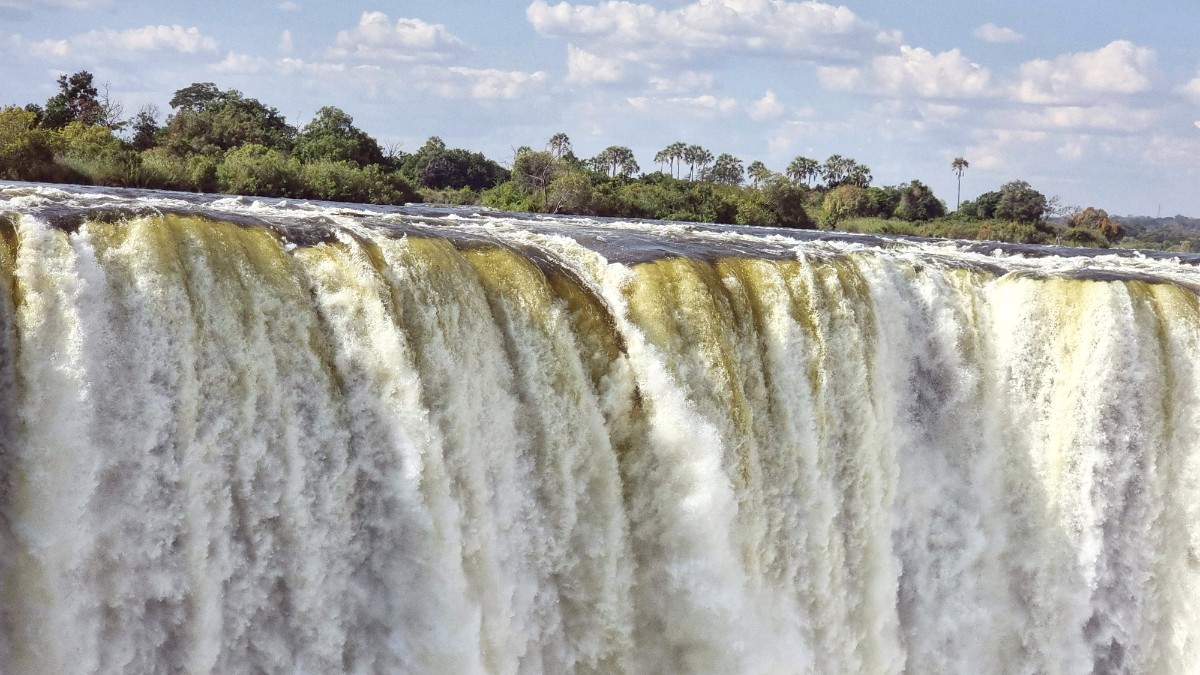
These are the main draws to the Victoria Falls region, awe-inspiring views and a rich history.
The Victoria Falls Bridge connects Zimbabwe and Zambia. It was built in 1905, forming part of Cecil Rhodes' vision for a Cape to Cairo railway. The bridge spectacular views of the falls and the gorge. It also the site for bungee jumping and bridge swings, an adventure element to its historical significance.
A dry bag a helpful item.
On Zimbabwean side, commemorates his discovery.
Monument to engineering and colonial ambition.
Victoria Falls Hotel and Livingstone town retain colonial buildings.
Region has archaeological sites, evidence of early human habitation.
Falls hold spiritual significance for local communities, sacred place.
Beyond the awe-inspiring falls, the surrounding landscape a wealth of natural beauty and wildlife.
This park protects the falls and the rainforest sustained by its spray. It numerous walking paths and viewpoints.
Contains the Zambian side of the falls and a wildlife section where you can spot animals like giraffes, zebras, and white rhinos.
Located upstream from Victoria Falls town, this park game drives and river safaris along the Zambezi.
Mosi-oa-Tunya (Zambia) for white rhino. Zambezi (Zimbabwe) good general game viewing. Full or half-day options exist.
Guided walks in national parks, like the rhino walk in Mosi-oa-Tunya National Park, a closer, more intimate wildlife experience.
Excellent opportunities exist, especially along the river and in surrounding parks. The region a wide variety of bird species.
The basalt rock formation over which the falls plunge, and the subsequent erosion that formed the gorges, main geological attractions.
The region historically active, influencing gorge formation. Falls constantly retreating upstream due to erosion. Groundwater systems a role in river flow and fall dynamics.
Located at the base of the falls, accessible by a steep hike from the Zimbabwean side, it a dramatic view of the turbulent waters.
The viewpoints along the falls on both the Zimbabwean and Zambian sides incredible perspectives.
Beyond the well-trodden paths, Victoria Falls lesser-known attractions and unique experiences.
Beyond well-trodden paths, Victoria Falls lesser-known attractions and unique experiences.
Capture different and memorable perspectives.
Explore unique activities and gain different perspectives of Victoria Falls.
Engage with local communities and traditions for a cultural experience.
Plan your sightseeing to cover both the iconic landmarks and hidden gems.
Prioritize main attractions like the Falls and Bridge. Consider guided tours for insights. Factor in time for different viewpoints.
Helicopter or microlight flights offer unparalleled aerial views, capturing the entire falls system and gorges.
Various operators or local guides are available at the falls entrance for guided tours, insights into the falls and its ecosystem.
Find a GuideHelicopter or microlight flights offer spectacular aerial views, an unique perspective that ground views cannot match.
Book Aerial TourVisit the Livingstone Museum in Zambia or the Railway Museum to learn about the region's history and culture.
The Boma Dinner in Victoria Falls, Zimbabwe, a popular evening of traditional music, dance, and storytelling.
Game drives in Zambezi National Park or Mosi-oa-Tunya National Park for wildlife viewing.
Safari BookingsEnsure a smooth visit with these practical tips for exploring the falls.
Capture the majesty of Victoria Falls with these photographic considerations.
Prioritize main attractions like the Falls and Bridge. Consider guided tours for insights.
Factor in time for different viewpoints and allow for unexpected discoveries.
The experience of Victoria Falls varies significantly with the season, impacting water levels and activities.
The falls are at their most voluminous, a spectacular display of power, but also intense spray.
The water level drops, revealing more of the rock face and allowing access to certain activities.
The "best" time depends on your priorities. For maximum water volume and spray, visit during high water.
Great for spectacular views and experiencing the "smoke that thunders."
For swimming in Devil's Pool and world-class white-water rafting, low water season is ideal.
Excellent for adventure activities and clearer gorge views.
Shoulder seasons (April/May and September/October) offer a balance of good water levels and accessible activities.
Cooler, drier weather. Excellent for wildlife viewing as animals gather at water sources. Clear skies common.
Hotter, humid, with heavy rains. Lush greenery. Birdlife abundant. Lower visitor numbers.
Average daily temperatures range from 20-30°C (68-86°F), with hotter peaks in the wet season.